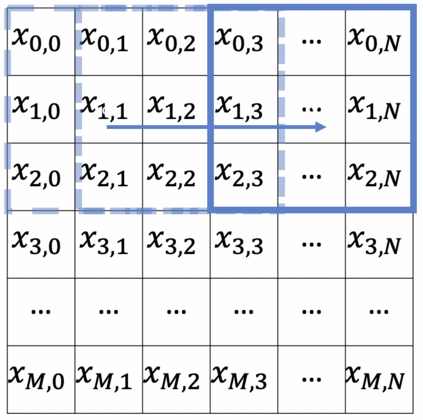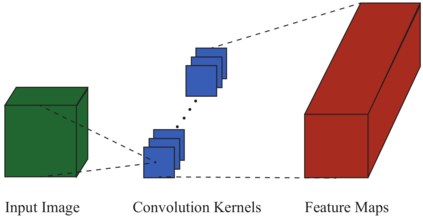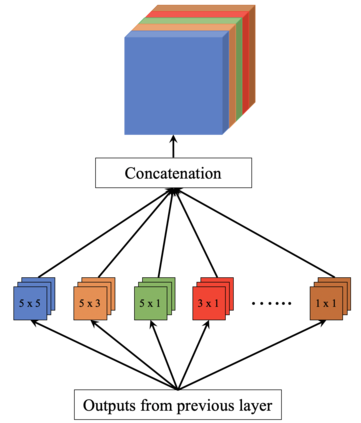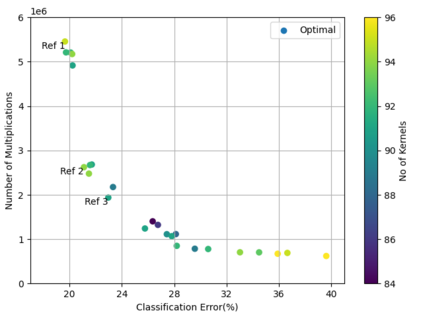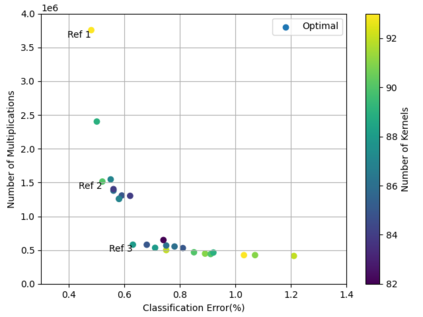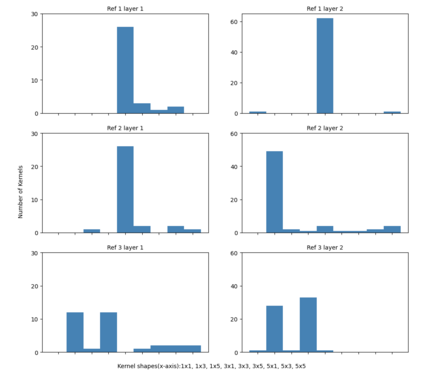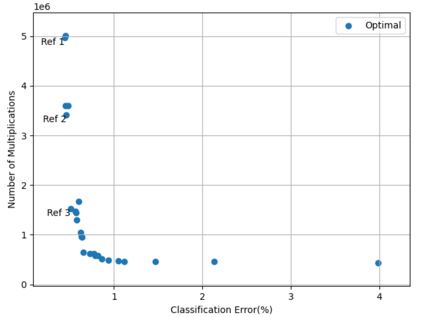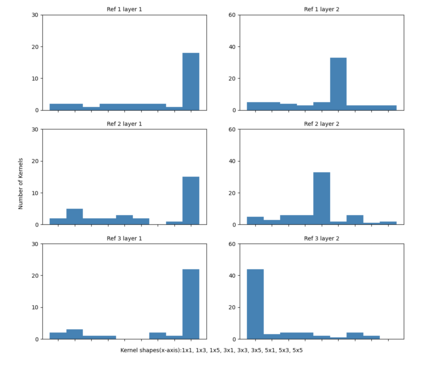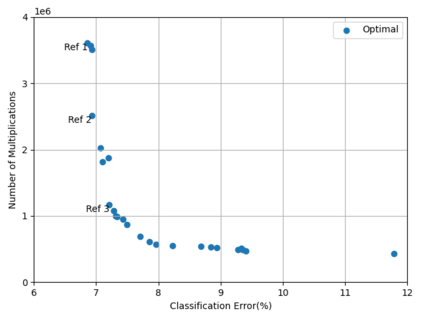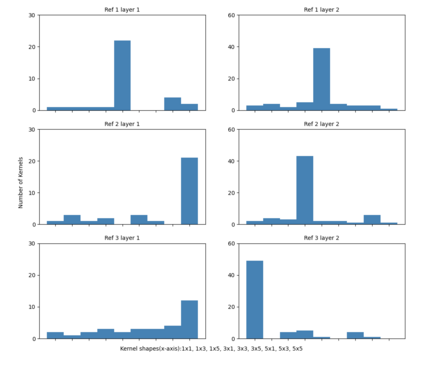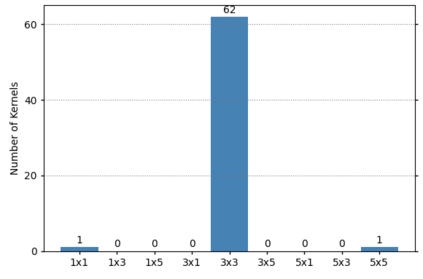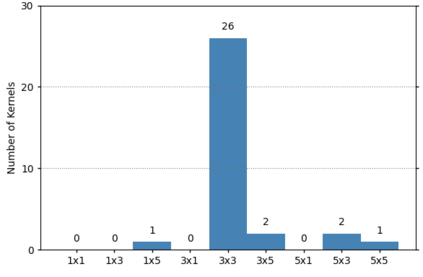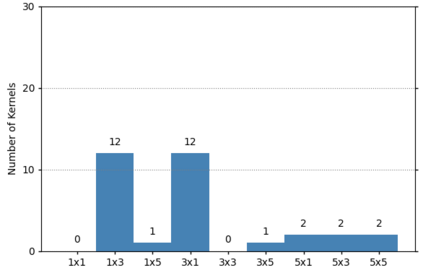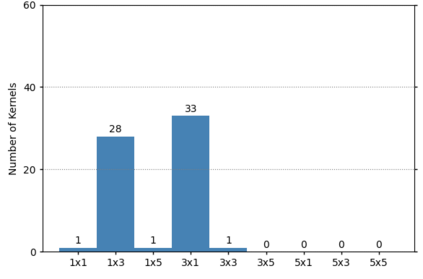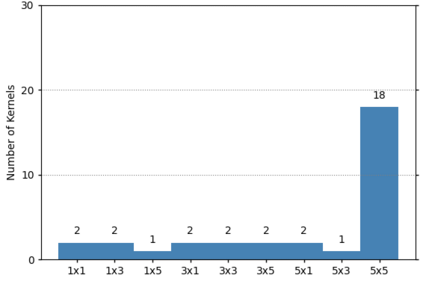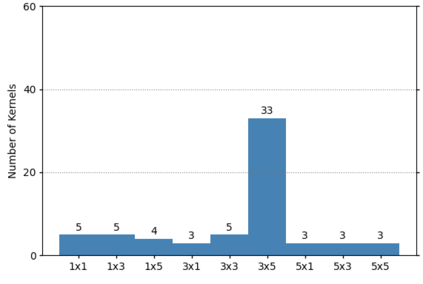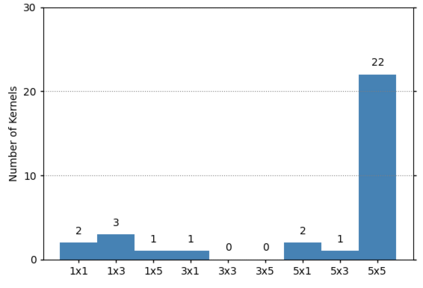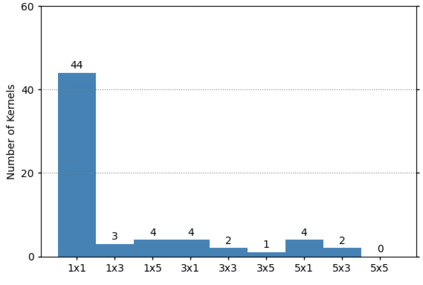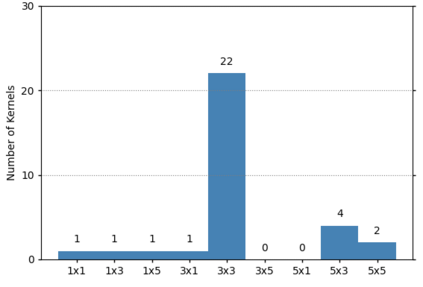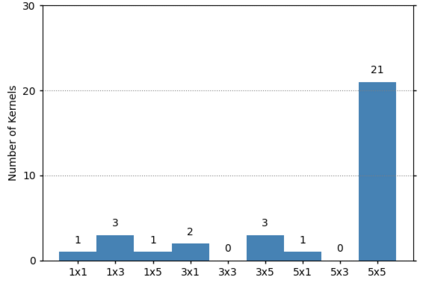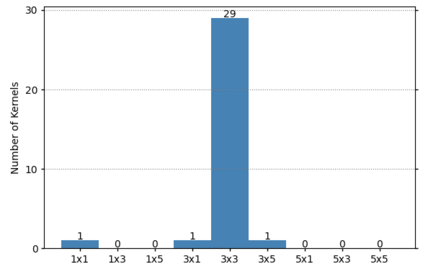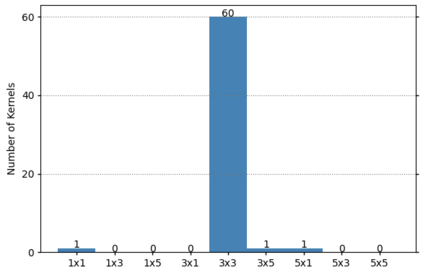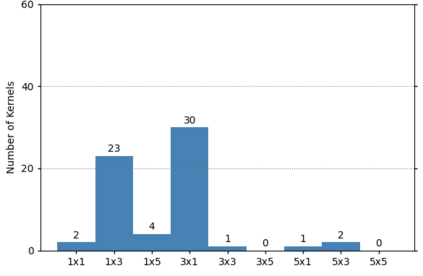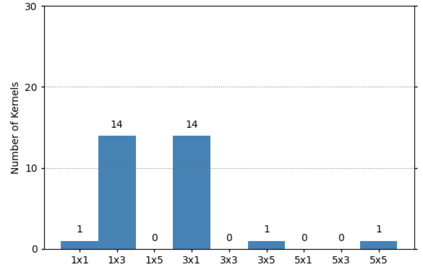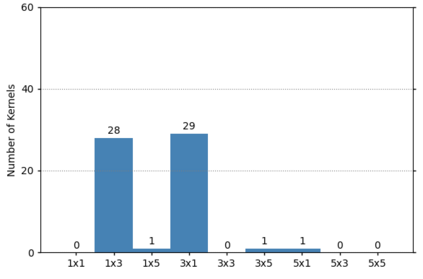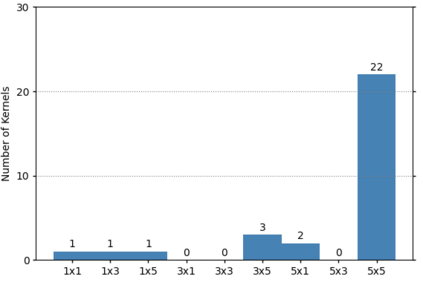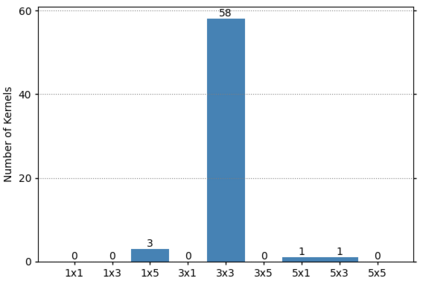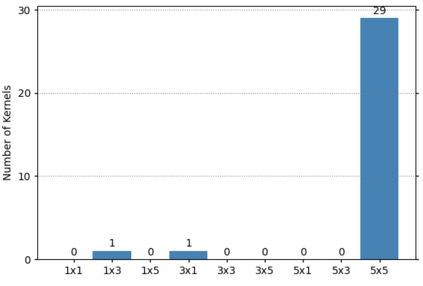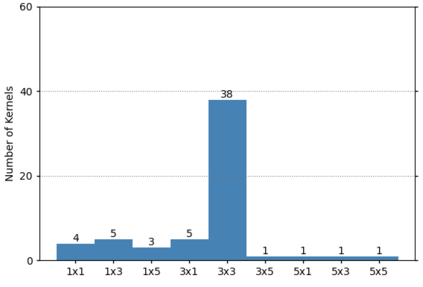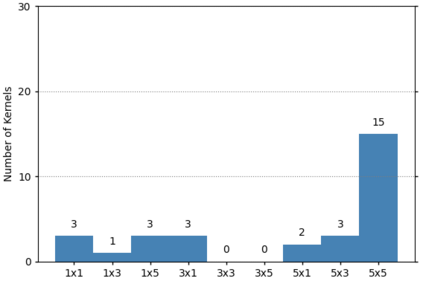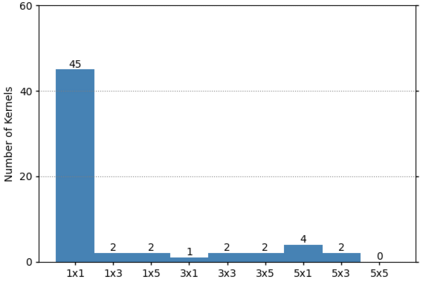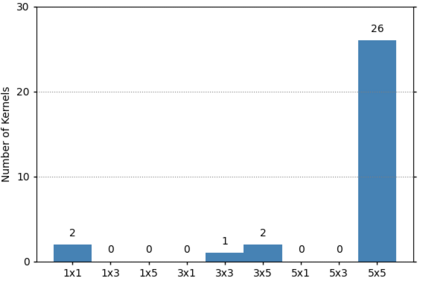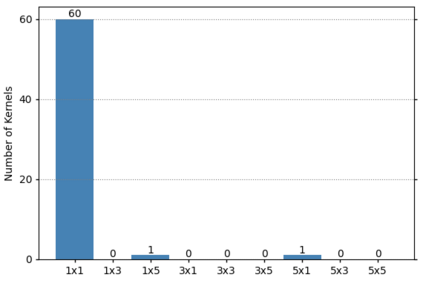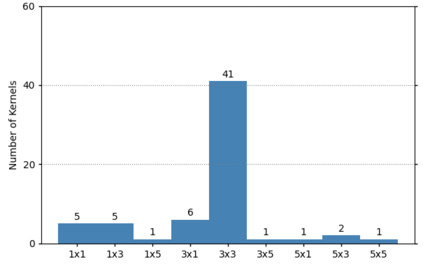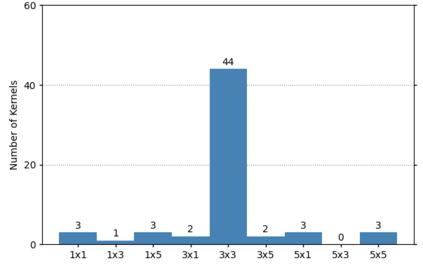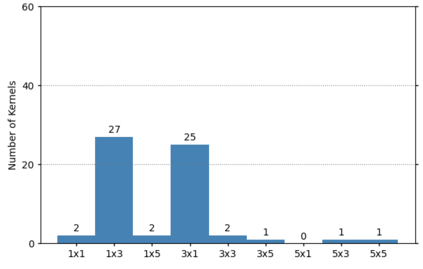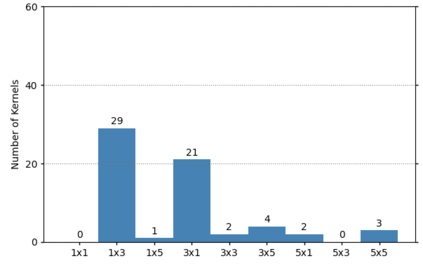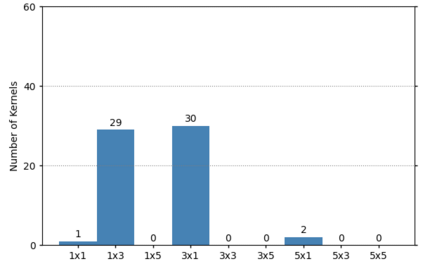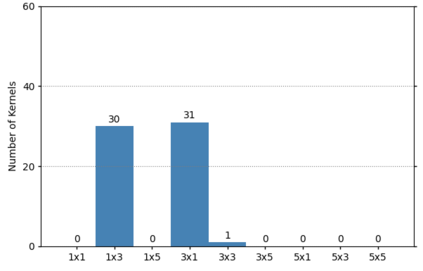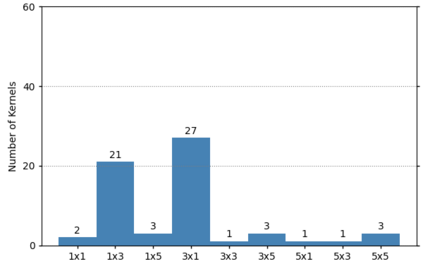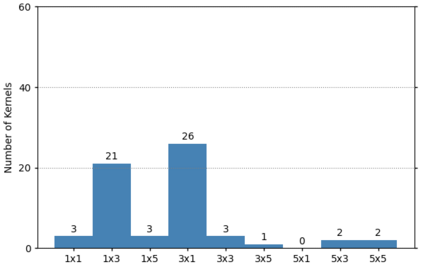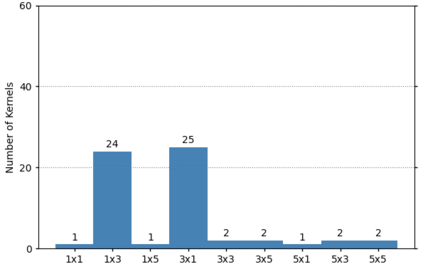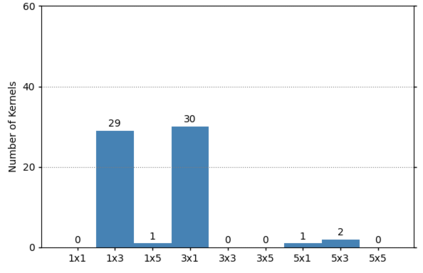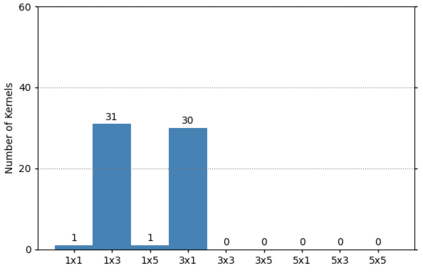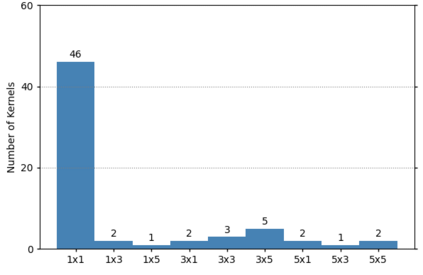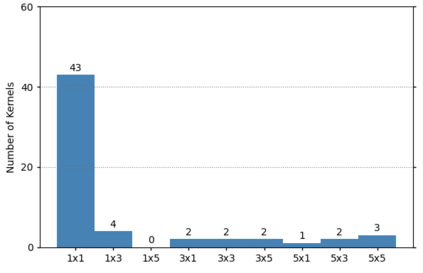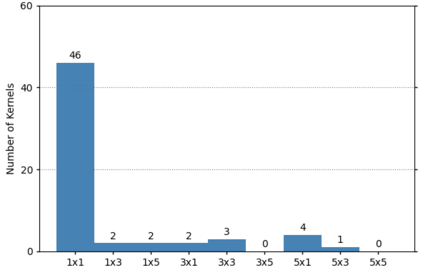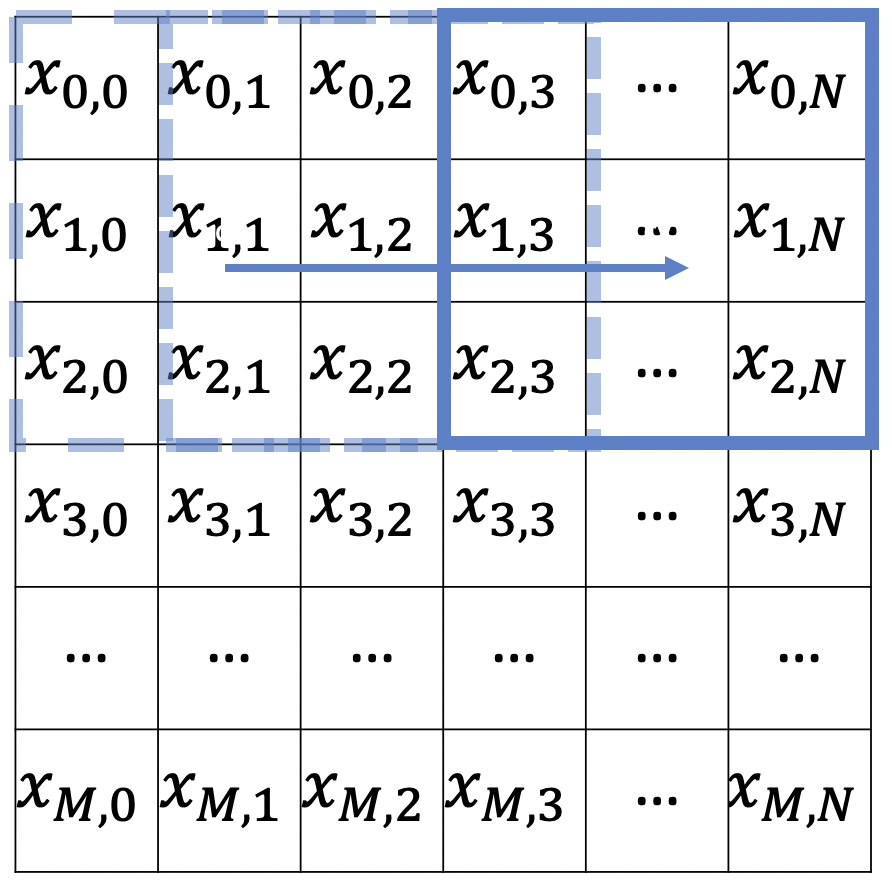While state-of-the-art development in CNN topology, such as VGGNet and ResNet, have become increasingly accurate, these networks are computationally expensive involving billions of arithmetic operations and parameters. To improve the classification accuracy, state-of-the-art CNNs usually involve large and complex convolutional layers. However, for certain applications, e.g. Internet of Things (IoT), where such CNNs are to be implemented on resource-constrained platforms, the CNN architectures have to be small and efficient. To deal with this problem, reducing the resource consumption in convolutional layers has become one of the most significant solutions. In this work, a multi-objective optimisation approach is proposed to trade-off between the amount of computation and network accuracy by using Multi-Objective Evolutionary Algorithms (MOEAs). The number of convolution kernels and the size of these kernels are proportional to computational resource consumption of CNNs. Therefore, this paper considers optimising the computational resource consumption by reducing the size and number of kernels in convolutional layers. Additionally, the use of unconventional kernel shapes has been investigated and results show these clearly outperform the commonly used square convolution kernels. The main contributions of this paper are therefore a methodology to significantly reduce computational cost of CNNs, based on unconventional kernel shapes, and provide different trade-offs for specific use cases. The experimental results further demonstrate that the proposed method achieves large improvements in resource consumption with no significant reduction in network performance. Compared with the benchmark CNN, the best trade-off architecture shows a reduction in multiplications of up to 6X and with slight increase in classification accuracy on CIFAR-10 dataset.
翻译:CNN 地形学(如 VGGNet 和 ResNet ) 的状态发展越来越准确,但这些网络在计算成本方面成本高昂,涉及数十亿的算术操作和参数。为了提高分类准确性,最先进的CNN通常涉及大量复杂的演化层。然而,对于某些应用,例如Times(IoT)互联网(IoT),在资源限制的平台上实施这种CNN,CNN结构必须规模小而效率高。为了解决这个问题,降低卷土重来层的资源消耗已成为最重要的解决办法之一。在这项工作中,建议采用多目标优化方法,通过多目的进化层计算和网络准确性能之间的交换。对于某些应用,例如,在资源限制的平台上安装的网络互联网(IoT),这类CNN(Ioote),这类CNN结构的大小与计算资源消耗量成正比。因此,本文认为计算资源消耗量的优化,方法是通过降低卷积层的大小和非内层的节流来增加计算资源消耗量。此外,在Creal breal基准值的计算结果中,在常规的计算结果中明显地显示,在纸化过程中的递减法的计算方法的计算结果中,因此,在纸价的计算结果将大大降低成本结构的计算结果在6 。

